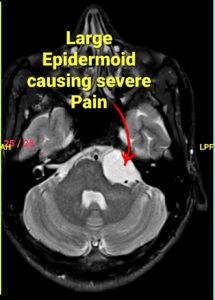Microvascular Decompression Surgery or MVD surgery is a brain operation, commonly done to relieve nerve compression of the fifth (Trigeminal nerve) and seventh (Facial Nerve) cranial nerves. Occasionally the ninth (Glossopharyngeal nerve nerve is also decompressed by itself or in conjunction with the Trigeminal nerve. Cranial Nerves are nerves that arise in the brain. They are twelve in number.
All about MicroVascular Decompression:
What is MVD surgery?
There are twelve nerves that arise from the brain, on each side. Of these, the fifth (Trigeminal nerve), seventh-eighth complex(Facial-Vestibulocochlear) and ninth(glossopharyngeal) nerves are prone to compression leading to hyperactivity disorders that need treatment.
What is the fifth nerve called?
The fifth cranial nerve is the Trigeminal Nerve. The Trigeminal nerve supplies the sensation to the face. It has three divisions : V1,V2 and V3. these supply specific areas of the face on each side.
What is the seventh-eighth nerve called?
The seventh-eighth cranial nerve complex is the Facial nerve-Vestibulocochlear nerve complex. The facial nerve supplies the facial muscles. The eighth nerve is the nerve of hearing and balance. This is the reason why in Hemifacial spasm, occasionally, either tinnitus or a clicking sound may be heard.
What is the ninth nerve called?
The ninth nerve is the Glossopharyngeal Nerve. It supplies sensation to base of tongue, tonsillar pillars and throat. There are other functions too, but this is the function most affected in glossopharyngeal neuralgia and causes pain while swallowing.
What is Microvascular Decompression surgery?
It is an operation done at the level of the brainstem, where the involved nerve exits/enters the brainstem. The blood vessel compressing the nerve is moved away from the nerve(decompressed) using a microscope/ endoscope or both. This is performed to treat Trigeminal neuralgia, Hemifacial spasm or glossopharyngeal neuralgia.
Is it possible to see a video of MVD surgery?
Certainly. Dr. Jaydev Panchwagh, chief Neurosurgeon and Director at the MVD Centre shows us how it is done. here:
If you are interested in knowing more about a video discussing diagnosis, symptoms, MRI and treatment, please click here.
Can I get a comprehensive idea about Trigeminal neuralgia?
Yes, you can read all about it on this page.
